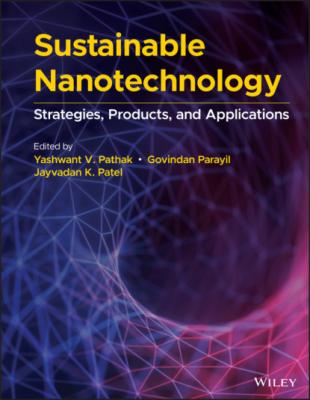Sustainable Nanotechnology. Группа авторов
Читать онлайн.| Название | Sustainable Nanotechnology |
|---|---|
| Автор произведения | Группа авторов |
| Жанр | |
| Серия | |
| Издательство | |
| Год выпуска | 0 |
| isbn | 9781119650317 |
3.12 Green Nanotechnology in Quaternary Industry Sector
The quaternary industry sector in the economy includes the activities based on the intellectual or knowledge‐based part of the economy. This sector is found in only most advanced countries in which through research and development, latest ICCT, and typically includes services such as information generation and sharing, information technology (communication and computing), consultation, education, research and development, and other knowledge‐based services supported by technology. The important ICCT underlying technologies which work with GNT to provide intelligent services are artificial intelligence, 3D printing, cloud computing, IoT, quantum computing, information storage technology, mobile business technologies, and online education technologies. GNT being general‐purpose technology of the twenty‐first century supports ICCT underlying technologies as another set of general‐purpose technologies to develop super‐intelligent machines and super‐human beings when these technologies get saturated [90].
3.13 Challenges in Managing Nanotechnology Innovations
NT offers a plethora of new materials for different industries and industry sectors. Though public perception is generally supportive of NT, some risk analysis of the potential long‐term effects of green routed manufactured nanomaterials in human food is required. In different industry sectors, the exposure risk would relate to different aspects and it is a challenge to the scientist and engineers as well as local governments while managing the NT innovations. This also needs to arrange some public awareness to explain the uses of NT by all industry sectors to explain the benefits and risks to the consumers. The exact number of available nanomaterials naturally available as well as man‐made in the environment including the oceans are not understood and the fate and behavior of manufactured nanomaterials in important systems, such as the oceans, are poorly understood. The design of nanomaterials should be according to the principles of GNT that would complement and support current regulations of the government and to address the predicted risk while fostering the sustainable development of NT as GT.
3.14 How Green Nanotechnology Is Different and Secured to Achieve All 17 Sustainable Development Goals of UN
While discussing about opportunities and challenges of GNT and nanomaterials as general‐purpose technology to solve many problems in the primary industry sector, secondary industry sector, tertiary industry sector, and quaternary industry sector, it is found that NT is a boon to mankind and gives incredible power to human beings to improve the comfortability and quality of life. While comparing the United Nations SDG with GNT opportunities, 12 goals out of 17 goals can be realized by using GNT. Five goals can be realized using ICCT underlying technologies and one goal of reduced inequalities among Countries is not directly related to technological innovations. The possibility of using GNT processes/NT systems in solving 17 goals of global sustainable development is shown in Table 3.8.
The NT solutions in different industry sectors are planned by ensuring nanoscale materials are designed and developed with human health and the global environment in mind, and hence further fears on sustainability due to degradable environmental concerns are unnecessary for future years. To accelerate the development of GNT, countries should consider the following steps:
1 Educating the people and entrepreneurs to create a supportive environment in society to accept new technology products.
2 Assessment of GNT implications to gauge the trade‐off between benefits and constraints for nanoproducts and their existing counterparts.
3 Develop
